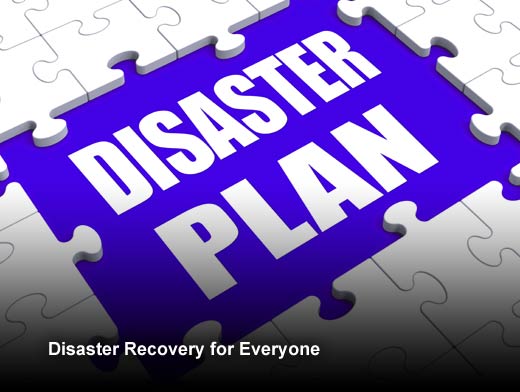There’s no other way to put it: Most companies have severely lacking business resiliency plans – if one exists at all. The numbers are truly scary. According to the Disaster Recovery Preparedness Council, 73 percent of companies are failing in terms of disaster readiness, and 58 percent rarely or never even test their disaster recovery plans.
Yet, getting the company’s applications and services back up and running after an IT failure, whether it’s a small outage or a major disaster, is one of the most important tasks an IT team could ever face. So what’s the problem?
In the past, disaster recovery (DR) and business continuity (BC) solutions were extremely expensive to deploy, too complex to maintain and impossible to test for most IT organizations. And that’s on top of the fact that companies deploying traditional approaches generally lack confidence that they will return to normal operations in a timely manner.
Thankfully, all of this is changing. Newer Disaster-Recovery-as-a-Service (DRaaS) solutions provide features and cost models that can fit the needs of almost any IT department. In this slideshow, HotLink, which just introduced HotLink Managed DRaaS, gives six reasons why IT can finally gain the business resiliency needed when the inevitable outage strikes.
Disaster Recovery for Everyone
Click through for six reasons IT can finally gain the business resiliency needed to overcome unplanned outages, as identified by HotLink.
The Cloud
Up until now, companies had limited DR/BC options. They could maintain their own recovery site, be locked into a co-location provider or sign an expensive contract with a service provider. Now, by using the public cloud to continuously maintain a mirror image of all servers and data, you can quickly and easily restore your data center in a cloud-based protection site in the event of an on-premise failure.
Affordable Protection
In the past, DR and BC deployments weren’t even an option for most companies due to the prohibitive cost. Today, affordable, pay-as-you-go cloud-based models allow businesses to dial the scope and scale of DR and BC that works best for them at a price that easily fits into existing IT budgets.
Testing
The problem with disasters is that they are, by definition, unexpected. Being able to frequently test any DR/BC site is the only way to have confidence in the recovery. Yet, testing a traditional deployment is too complex to undertake regularly, if at all. When you take DR/BC to the cloud, however, you can rely on more contemporary solutions that automate the process, so tests can be conducted on a regular, systematic basis.
Recovery
When you see the word “disaster,” most people think of things like floods, fires or storms. In reality, the more common situations that cause an IT outage are more mundane things like security breaches, software issues and human error. These events can be expected to happen multiple times per year in most any IT shop. Recovery in the cloud is the perfect resiliency solution — you are up and running fast with an insurance policy that you only pay for when you use it.
The Norm
You’ve had a failure. It’s critical to get back to normal as quickly as possible. But, many DR/BC contracts of the past haven’t specified what normal is, or when you can get back to it. And, what if you need more capacity than anticipated or the outage is affecting many companies in your region? Good luck. With public cloud-based DR/BC models, however, you can easily increase (or decrease) your capacity – and even run indefinitely in the cloud. As a result, you get a predictable and agile business resiliency solution – no matter the extent and duration of any disaster you face.
Don’t Go It Alone
Cloud-based DR/BC, however simple in design, does introduce the complexity of a hybrid IT environment. Of course, most IT departments don’t have extra personnel on hand – with or without specialized hybrid IT skills – just waiting for a new project. With a public cloud-based managed-service model, expert resources complement your IT team and provide the ongoing monitoring, management and testing, eliminating further stress on your already over-burdened IT staff. But, unlike traditional managed services, you still benefit from all the economic advantages of public cloud infrastructure for your secondary DR/BC site.









